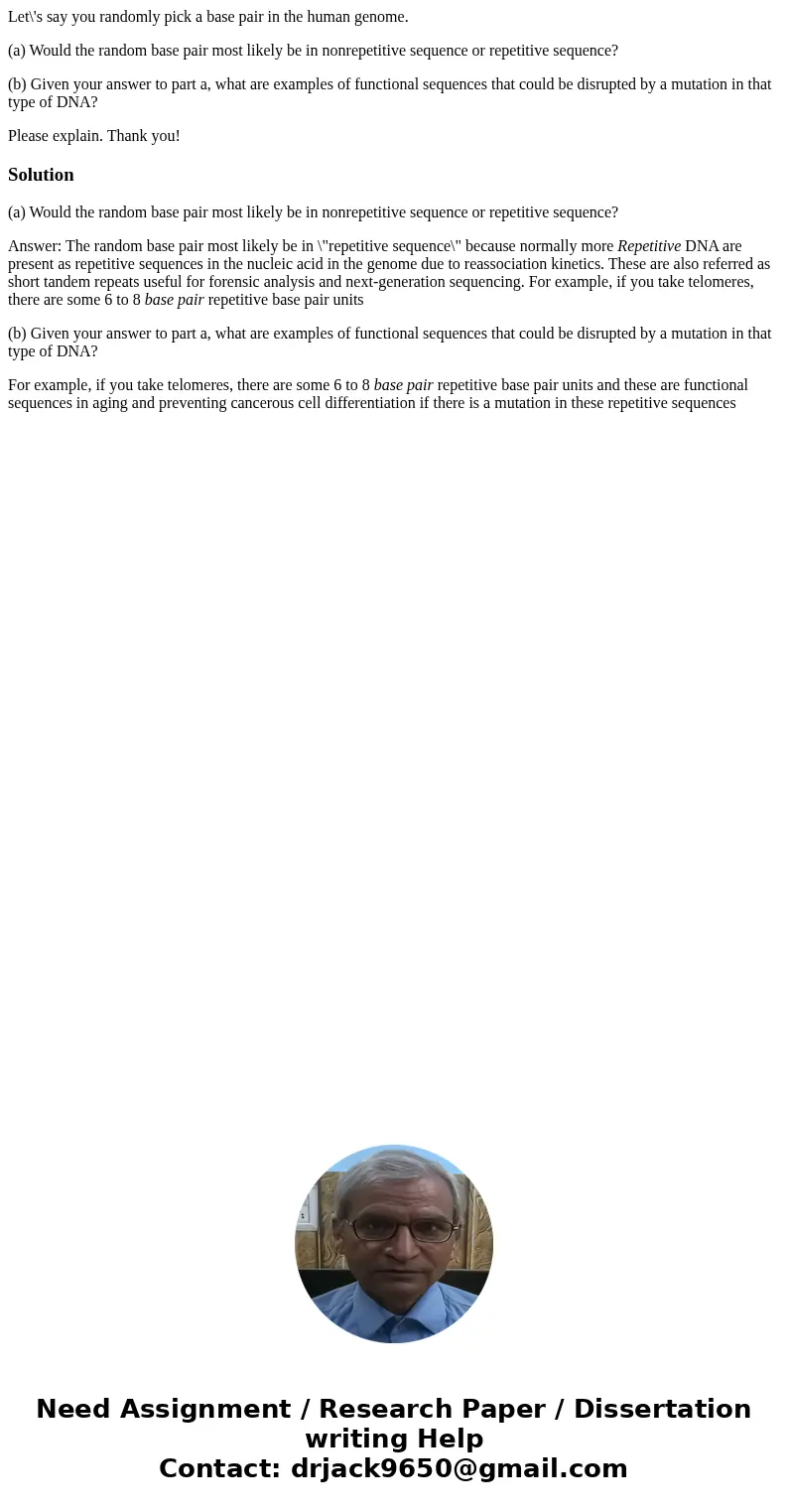Lets say you randomly pick a base pair in the human genome a
Let\'s say you randomly pick a base pair in the human genome.
(a) Would the random base pair most likely be in nonrepetitive sequence or repetitive sequence?
(b) Given your answer to part a, what are examples of functional sequences that could be disrupted by a mutation in that type of DNA?
Please explain. Thank you!
Solution
(a) Would the random base pair most likely be in nonrepetitive sequence or repetitive sequence?
Answer: The random base pair most likely be in \"repetitive sequence\" because normally more Repetitive DNA are present as repetitive sequences in the nucleic acid in the genome due to reassociation kinetics. These are also referred as short tandem repeats useful for forensic analysis and next-generation sequencing. For example, if you take telomeres, there are some 6 to 8 base pair repetitive base pair units
(b) Given your answer to part a, what are examples of functional sequences that could be disrupted by a mutation in that type of DNA?
For example, if you take telomeres, there are some 6 to 8 base pair repetitive base pair units and these are functional sequences in aging and preventing cancerous cell differentiation if there is a mutation in these repetitive sequences

 Homework Sourse
Homework Sourse